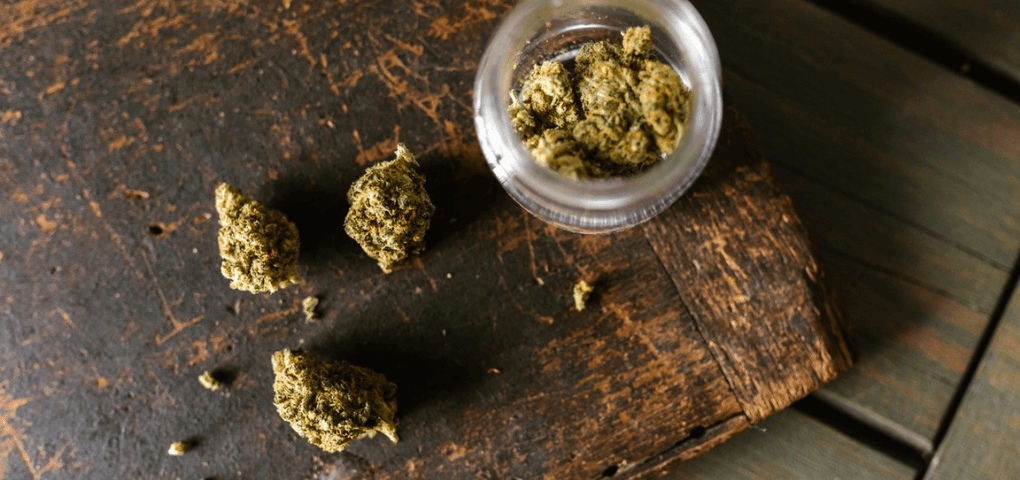
20 Marijuana Deaths Statistics Cannabis Users Should Know
Posted on | by Jenifer Kuadli
As more states move to legalize marijuana, the hazards the substance brings to the country come to the spotlight.
While marijuana intoxication is not generally fatal, consuming it still has its dangers. For cannabis to be lethal, an individual needs to smoke hundreds of joints within a few minutes.
However, this doesn’t mean that people don’t die from marijuana-related causes such as motor vehicle accidents and severe illnesses.
As the nation moves towards legalizing cannabis, it’s crucial that we stay informed on the latest marijuana deaths statistics.
The facts and figures might prove invaluable knowledge that will help us navigate and regulate its consumption.
Illuminative Facts on Marijuana-Related Deaths (Editor’s Choice)
- People who use cannabis are unlikely to die from an overdose of marijuana alone.
- Some researchers believe the legalization of marijuana is linked to the rising cardiac death rates.
- Marijuana exposure might be fatal to children 12 years and younger.
- Marijuana legalization on a federal level could lead to more traffic deaths.
- Marijuana users are 25% more likely to be in a fatal motor vehicle accident.
- Some researchers believe that a correlation between marijuana use and suicide exists.
Facts on Marijuana Deaths
1. People who use cannabis are unlikely to die from an overdose of marijuana alone.
(American Addiction Centers)
Consuming marijuana is not life-threatening, and it’s unlikely for a person to die because of an overdose. In fact, one study found that an individual will have to consume 15 to 70 grams of THC for it to be lethal. That’s between 238 and 1,113 joints per day based on the typical THC content of cannabis.
2. Some researchers believe the legalization of marijuana is linked to the rising cardiac death rates.
(American College of Cardiology)
The absence of statistics on marijuana deaths in the US shows that death from cannabis intoxication is improbable. However, this doesn’t mean that consuming the substance doesn’t have severe consequences.
Researchers believe that cannabis legalization in some states might be linked to the rising number of cardiovascular disease deaths.
According to the statistics, cardiac death rates have increased by 2.3% in men and 1.3% in women since cannabis was legalized. Data suggests a more substantial incidence in states that are tolerant of cannabis dispensaries.
3. Marijuana exposure might be fatal to children 12 years and younger.
(Social Work Today)
Marijuana deaths statistics among children aren’t as prolific as the statistics on other intoxication with harmful substances. But, there have been two reports on fatalities among children because of marijuana exposure since 2011.
Instances of death among children aren’t the only problem. The US Poison Control Centers reported a total of 67,300 calls for psychoactive substances exposure from 2000 to 2017
Accordingly, half of the calls are about marijuana exposure. Some of the calls include severe medical outcomes like seizures and coma.
4. Smoking marijuana increases the risk of bleeding after a post-invasive procedure.
(American College of Cardiology)
Several people might claim that cannabis is harmless, and existing marijuana deaths statistics would prove them right.
But the absence of statistics that directly links death to marijuana intoxication shouldn’t be a reason to disregard the possible consequences of its consumption.
Studies show that marijuana can cause post-invasive procedure complications among myocardial infarction patients. And about 50% who use cannabis run the risk of bleeding after their invasive procedure.

Marijuana and Other Substances-Related Deaths
5. Increasing the number of marijuana dispensaries might impact the opioid epidemic statistics positively.
(BMJ)
Some researchers hypothesize that increased access to marijuana for recreational and medical use can reduce the number of opioid deaths.
One study that analyzed data from counties and states where marijuana dispensaries are legal shows promising results.
According to the study, counties with a higher number of dispensaries had lower opioid mortality rates.
Researchers behind the study estimate that an increase in one to two dispensaries will result in a 17% decline in opioid mortality rate.
The percentage is more significant for synthetic opioids, where the reduction in mortality rate is 21%.
6. Americans lose 2.8 million years of potential life due to alcohol-related deaths.
(CDC)
Excessive consumption of alcohol can bring about long-term and short-term health issues that can lead to death.
For example, there are approximately 261 deaths every day in the US due to excessive alcohol consumption. This translates to 2.8 million years of potential life lost to alcohol consumption.
This overwhelming figure is why it’s considered one of the leading causes of preventable deaths in the US.
7. There are over 480,000 tobacco deaths per year in the US.
(FDA)
Tobacco use can lead to serious health problems for its users. The chemicals inhaled by users harm almost every organ in their bodies which often lead to premature deaths.
It’s not surprising that in the US, over 480,000 individuals die because of tobacco use.
8. Opioid overdose in the US has been steadily increasing since 1999.
(NIH)
Opioid use remains a serious epidemic in the US that has led to the deaths of tens of thousands of people in the US.
Despite efforts to curb opioid addiction, the number of users who continue to consume this type of drug is increasing. Subsequently, opioid overdose will also continue to rise.
According to opioid overdose statistics, deaths from opioid use in the US have more than doubled in less than ten years.
Opioid overdose cases reached from 21,088 deaths in 2010 to 49,860 in 2019, the latest year for which data is available.
9. Alcohol kills approximately 3 million people every year.
(Alcohol Rehab Guide)
Excessive alcohol consumption is a global epidemic that takes away the lives of millions of people annually worldwide.
According to the World Health Organization, there are over 3 million alcohol-related deaths per year. This means alcohol accounts for approximately 5.3% of all human deaths in the world.
To put it plainly, one in 20 deaths globally is due to alcohol-related disease, injury, accident, murder, or suicide.
10. Approximately 10.1 per 100,000 men die because of methamphetamine intoxication.
(American Hospital Association)
With most of the country focused on the opioid epidemic taking thousands of lives, we often overlook the troubling meth death statistics before us.
Data suggests that around 10.1 men die for every 100,000 male population. Meth death rates among women are lower, but the figure is still alarming.
Approximately 4.5 for every 100,000 women die because of methamphetamine intoxication.
11. Drug overdose deaths in 2020 reached an all-time high in the US.
(Scientific American)
Many people are calling for a drastic change in how the government and society deal with substance use disorder.
This is because current policies and laws seem to be doing little to reduce the number of people with drug addiction. In fact, the number appears to be rising.
According to statistics, more than 93,000 people died from a drug overdose in 2020 alone, a 30% increase from the previous year’s records. This is the highest figure recorded in the US for any other one-year period.

US Statistics for Marijuana Deaths
12. Marijuana legalization on a federal level could lead to more traffic deaths.
(NCBI)
Research suggests that a correlation between marijuana and fatal traffic accidents exists.
Findings indicate that the federal stats for marijuana driving deaths could increase motor vehicle fatalities by 16% if cannabis were legalized on a national scale. That’s 4,843 more traffic deaths per year.
An analysis of motor vehicle fatalities in one state where marijuana is legal showed an increased proportion of drivers involved in fatal accidents who tested positive for THC.
Although researchers admit this doesn’t mean driving impairment, the results still suggest increased consumption of cannabis before driving ever since marijuana legalization.
13. The number of deaths caused by marijuana intoxication is almost zero.
(American Addiction Centers)
Proponents of marijuana legalization often point out marijuana vs alcohol deaths statistics when making their argument.
There are more than 88,000 alcohol-related deaths every year. Around half of this figure is due to binge-drinking. In contrast, statistics show that fatalities resulting from cannabis toxicity never happens.
14. Colorado marijuana driving deaths statistics recorded an increase in traffic deaths since marijuana legalization.
(United Press International)
An analysis of the traffic deaths in Colorado might show a correlation between cannabis and traffic fatalities.
Records show that since the state legalized cannabis for recreational use, Colorado had an additional 75 deaths per year from traffic accidents.
15. Marijuana users are 25% more likely to be in a fatal motor vehicle accident.
(USA Today)
People who support marijuana use believe that getting high on cannabis isn’t as dangerous as alcohol intoxication.
This is difficult to prove since CDC doesn’t have yearly statistics of drunk driving deaths vs. marijuana driving deaths.
However, the agency believes that people who use cannabis are 25% more likely to be involved in a fatal car crash.
16. Some researchers believe that a correlation between marijuana use and suicide exists.
(Medpage Today)
The latest studies on suicide in the US suggest that suicide and marijuana use might be interconnected.
Researchers are still hesitant to declare causation, but the stats on marijuana related deaths may show a relationship between cannabis use and suicide.
One report shows a higher suicide rate among Colorado veterans, where marijuana use is legal, than the national veteran suicide rate.
Furthermore, 2020 records on suicide among Colorado veterans increased by 25% compared to two-year prior records.
Researchers observed similar suicide trends among teenagers. In fact, toxicology reports reveal that marijuana is the most common substance found in teenagers who die by suicide.

Statistics on Marijuana Deaths Worldwide
17. The majority of cannabis-related deaths in England and Wales happen to men.
(Statista)
Data on drug-related deaths in England and Wales show that men are more inclined to die from drug use than women.
For example, according to the latest marijuana related deaths statistics, men account for 37 of the cannabis-related deaths while only three instances for women.
We see the same pattern for cocaine-related deaths, where men account for 280 fatalities and women 65.
18. According to a French study, driving intoxicated with alcohol is more dangerous than driving under the influence of marijuana.
(Civilized)
Traffic deaths caused by marijuana statistics aren’t as horrifying as death rates caused by alcohol intoxication.
For example, records from France show that an individual driving under the influence of marijuana is only 1.65 times more likely to cause a fatal accident than a sober one.
In comparison, a drunk person is 17.8 times more likely to cause a deadly traffic accident than a sober person.
Further, the number of deaths would only be reduced to 4.2% if no one ever consumed marijuana, as opposed to the 27.7% reduction in fatalities if no one ever drank alcohol before driving.
19. Accidental injury accounts for 29.9% of marijuana-related deaths in Australia.
(Science Direct)
The statistics on deaths indirectly caused by marijuana in Australia show a mortality rate of 0.10 to 0.23 per 100,000 individuals.
Of these cannabis-related deaths, approximately 29.9% are due to accidental injury. Only 7.9% of mortality cases happened because of natural diseases or drug effects.
20. Cannabis-related motor vehicle accidents cost Canada $1.1 billion a year.
(Science Daily)
Marijuana consumption increased in Canada from 14% to 17% following its legalization. However, this significant increase in marijuana users isn’t the only troubling thing.
One survey shows that individuals who drive within a few hours of consuming marijuana increased from 573,000 to 622,000.
This could bring about increased motor vehicle accidents which could lead to higher socio-economic costs.
In fact, the statistics on marijuana deaths and social costs for it in Canada show an astounding $1.1 billion in societal and economic costs.
Conclusion
Most people take the absence of records on deaths from marijuana intoxication as proof that the substance is not lethal. However, it’s crucial to note that marijuana consumption is not without dangers.
Some studies show that driving under the influence of marijuana has led to several fatal motor vehicle accidents.
So while consumption of marijuana is not deadly, the effects it brings to users are undoubtedly life-threatening.
FAQ
There are no records of deaths directly caused by marijuana intoxication. For the substance to be lethal, a user needs to consume about 70 grams of THC within a couple of minutes for it to pose immediate risks.
This is equivalent to hundreds of joints in just a short period. However, some studies believe that edible cannabis might be harmful and fatal to children.
Deaths resulting from marijuana intoxication don’t happen worldwide. However, most people consider cannabis as a gateway drug.
So, information like the highest death rate from drug use disorder and the country with the highest marijuana consumption are crucial data.
Since the US holds the top spot for both, we can say the country has the highest number of marijuana-related psychoactive drug deaths.
Marijuana use has many short-term and long-term effects. Here are some of its short-term impacts on the body and the brain:
- Impaired cognitive skills
- Altered senses
- Changes in mood
- Impaired memory
- Hallucinations
- Psychosis
- Impaired body movements
Some of its possible long-term effects include:
- Losing IQ points
- A decline in verbal ability
- Chronic bronchitis
- Schizophrenia
- Higher risks of anxiety and depression
- Heart problems
Marijuana is the most widely used and trafficked illicit drug in the US. So it doesn’t come as a surprise that law enforcers arrest over 500,000 people for marijuana-related offenses.
This means that police across the US make one marijuana arrest every 58 seconds. About 92% of those arrested for marijuana crimes are for the mere possession or use of the substance.
Deaths arising from marijuana intoxication don’t happen because the substance is not fatal even if consumed in large amounts. However, there are cases of fatalities that are the consequence of marijuana consumption.
According to marijuana deaths statistics, fatal injuries resulting from the psychoactive ingredient present in cannabis are on the rise. This high number is the result of legalizing the substance in some states in the US.